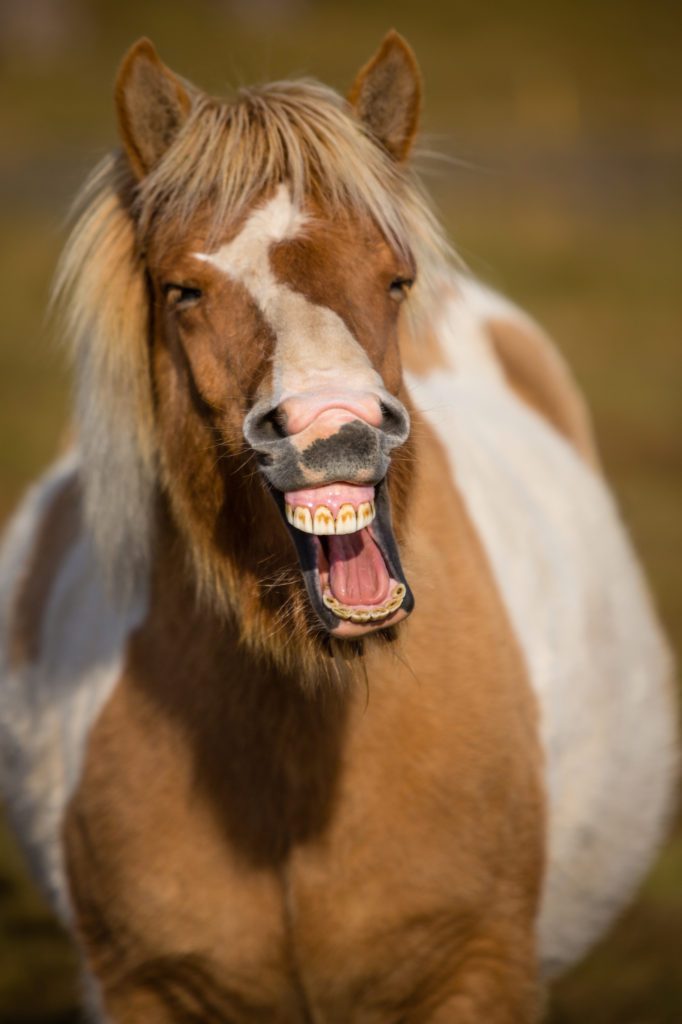Dental care is very important, yet sometimes an overlooked aspect of horse care. We feel that this topic is of VITAL importance.

Oral examination and care should begin in the earliest stages of a horses life to ensure a normal and healthy mouth. In the first few years of life, the horse’s mouth is a dynamic place. By the time your horse is 5 years old, they should have most of their 36-40 permanent adult teeth. Up until this age, they are loosing baby teeth and erupting permanent teeth.

Retained caps (un-shed baby teeth) are a problem in young horses that can lead to uneven wear of the opposing tooth. This is one of the reasons why young horses (less than 5 years old) should be examined at least once every 6 months.
Geriatric horses (over 17 years old) should also be examined at least once every 6 months as well. At this point of a horse’s life, teeth may begin to be lost and consequently the dynamics of their mouth can change dramatically.
All other horses should be examined once a year unless they have issues that need to be addressed.
Horse’s teeth are different from human teeth in many ways. For humans, we are looking to have straight, clean pearly white teeth and prevent cavities. For horses, the aims of preventative maintenance is to provide comfort by removing the sharp enamel points that develop and to maintain or prevent malocclusions of the teeth.
Sharp points develop on the outer surface of the upper cheek teeth and inner surface (towards the tongue) of the lower teeth. These sharp points occur because of the way the horse’s jaws are shaped and how their teeth continue to grow over their lifetime. Horses are designed so that the mandible (lower jaw) is more narrow than the maxilla (upper jaw).
The upper cheek teeth on the outer aspect (toward the cheek) and the inside aspect of the lower cheek teeth (toward the tongue) are typically not in direct contact to cause wear, so the teeth are able to become sharp in these areas. Sharp points that develop can cause discomfort, ulcerations, or even erosions on the horse’s tongue or cheeks.
Other common problems we will be looking for and can address are excessively worn teeth, excessively long teeth, malocclusions (waves, ramps, hooks, slants), fractured teeth, and periodontal pockets, to name a few.
One of the largest benefits to keeping on top of your horse’s dental care early in life is to ensure that they have an even occlusal surface when they become a geriatric patient. This will help to extend the “dental life” of your horse’s mouth and also improve your horses quality of life as he or she ages. This is very important because while horses are constantly erupting their teeth, they have a limited length of tooth to erupt (about 4-5 inches).
Once they are out of tooth (reserve crown) the tooth will fall out. This can lead to malocclusions, abnormal wearing of teeth, and cause your horse to not chew and utilize their feed as well as they should. It is important to be able to recognize problems when they occur.
Some common signs of dental problems include:
- Dropping grain while eating
- Difficulty chewing, tilting head while chewing, or excessive salivation
- Weight loss
- Tossing head while being ridden
- Packing balls of partially chewed hay between cheeks and teeth (quidding)
- Foul odor from mouth or nostrils
- Nasal discharge
- Facial swelling
If you have any questions or concerns about you horse’s dental care, please contact us!

